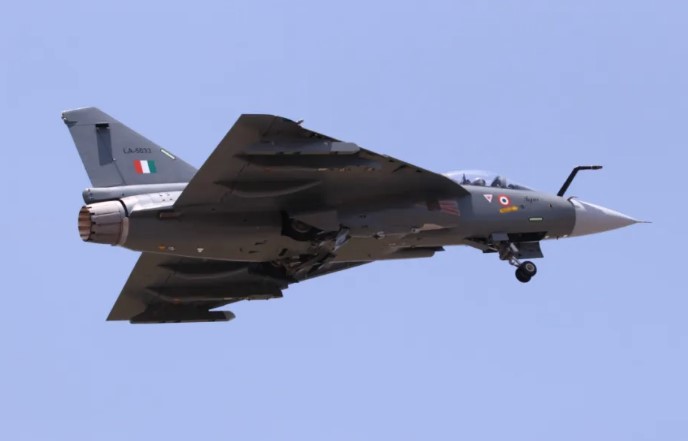A Russian MiG-31 fighter jet crashed in the Lipetsk region while attempting to land after completing a routine training flight, Russian state media reported on October 9. The Defense Ministry confirmed the crash and stated that the incident occurred when the aircraft’s landing gear failed midflight, causing the jet to lose control and collide with a wooded area in the Chaplyginsky district.
MiG-31 Crashes During Routine Training
Both pilots successfully ejected from the aircraft, and rescuers found them near the crash site. Medical teams took them to a hospital and treated their injuries, which ranged in severity. Authorities did not provide further details on their condition.
The Soviet-era MiG-31 supersonic interceptor, developed in the 1970s and based on the earlier MiG-25 model, engages high-speed aerial targets over long distances and at high altitudes. Some MiG-31 variants carry Russia’s advanced Kh-47M2 Kinzhal hypersonic missiles, making the aircraft a critical part of Russia’s strategic air defense and long-range strike capabilities.
Russia enters Estonian airspace with three MiG-31 jets prompting NATO to monitor activity
Fleet Limitations and Hypersonic Capabilities
The MiG-31 fleet has been under strain for years due to the age of the aircraft and challenges in production. Russia has attempted to expand its MiG-31K variant, which carries the Kinzhal missile, especially since the start of the full-scale invasion of Ukraine. In 2022, only 12 of these aircraft were operational, but estimates from The Military Balance 2024 suggested that the number has grown to around 24.
Newer MiG-31I “Ishim” variants are reported to be capable of autonomously navigating to Kinzhal launch points, unlike the manually guided MiG-31K. Despite these upgrades, both the K and Ishim versions are refurbishments of aging Soviet-era jets rather than newly built aircraft. The original MiG-31 production ended in 1993, with only around 500 aircraft ever manufactured and fewer than 150 still believed to be operational.
Russia’s Powerful MiG-41 Could Outclass US F-35 Despite Global Sanctions
Russia has also relied heavily on mothballed MiG-31 airframes, estimated at 130–150 in 2018, to supply spare parts for active interceptors. By early 2024, around 90 MiG-31B/BM interceptors were in service, with an additional 30 assigned to naval aviation. Maintenance of the MiG-31 is demanding, as its D-30F6 engines require overhauls every 300 flight hours, adding further pressure on the fleet.
Earlier in the year, Ukraine’s Special Operations Forces reportedly struck Russia’s Savasleyka airbase, damaging at least one MiG-31 and one Su-30 or Su-34. Analysts noted that losing even a single MiG-31K carrying the Kinzhal missile could have significant consequences, given the limited number of these specialized aircraft.
MiG-31 Crashes Highlight Challenges for Russian Aviation
The recent crash follows another training accident earlier this year, when a Russian Su-34 fighter-bomber went down in a forested area near the Nizhny Novgorod region on July 1. Both pilots ejected safely before the impact. These incidents highlight ongoing challenges for Russia’s air force in maintaining older aircraft during routine operations.
The MiG-31’s primary air-defense variants are equipped with long-range R-33 and R-37 air-to-air missiles, emphasizing their role in defending Russian airspace against high-speed threats. Some modified versions, like the MiG-31K, are used to carry hypersonic Kinzhal missiles, which can strike distant targets at extreme speeds.
Putin moves Russian jets into Estonian airspace raising NATO concerns over repeated violations
Despite previous claims of large reserves, Russian officials have openly discussed the need to restart MiG-31 production due to the aging fleet. The combination of limited numbers, intensive maintenance needs, and reliance on older airframes puts pressure on Russia’s interceptor and hypersonic capabilities.
With the latest crash, the MiG-31 fleet suffers another setback, further reducing the number of operational aircraft capable of carrying hypersonic weapons. Each loss underscores the challenges of sustaining a high-performance air fleet composed primarily of aging Soviet-era designs.

